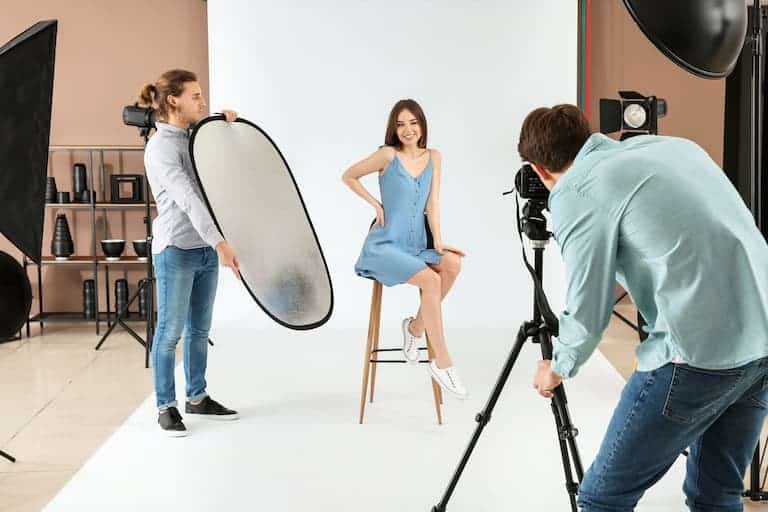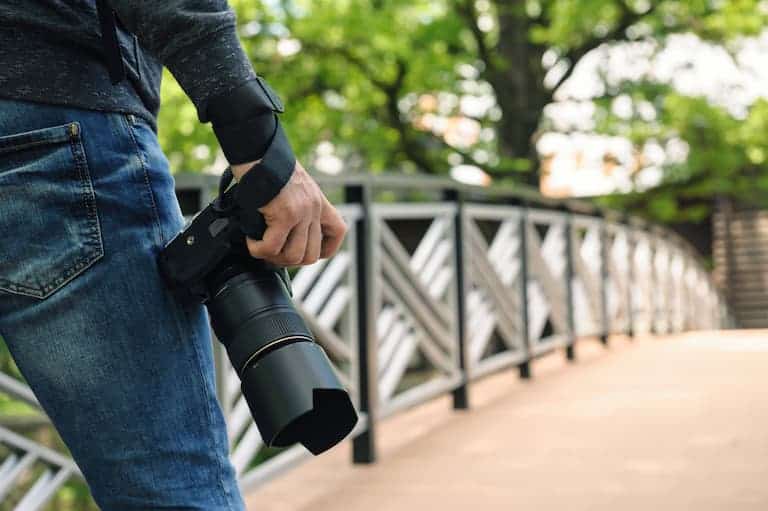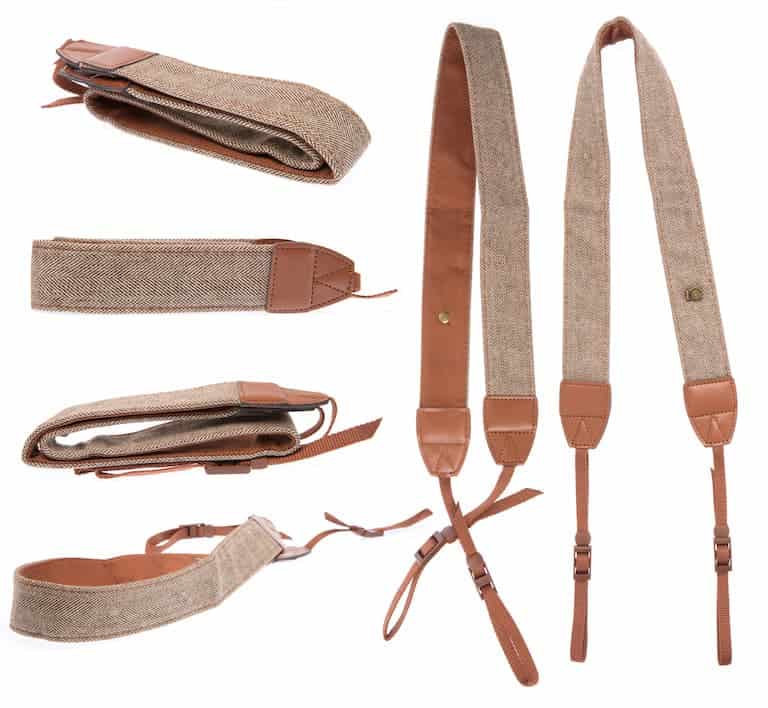Choosing the right camera strap is vital for your overall comfort as a photographer. Additionally, you need to make sure that your selected strap is the right fit for your specific camera and meets your needs in terms of durability, versatility, and more. Clearly, there’s more to your camera strap than meets the eye.
Not all camera straps are the same. Straps can vary in color, construction material, durability, weight limit, compatibility, and design. It is essential to consider these factors and ensure that your strap is compatible with your device while optimizing comfort.
This article will answer vital questions about camera straps, including whether they are universal or not. Furthermore, we will also discuss some crucial features to consider when selecting the right strap for your device. We will also explore some of the best camera strap options in the market.
Table of Contents
Are Camera Straps Universal?
Camera straps are not universal. Although there are some versatile options in the market that will work on most cameras, camera straps differ in color, material, durability, length, and adjustability.
As explained by the camera strap gurus at Expert Photography, it is important to decide on a strap that best works for you. You should consider features specific to your camera, such as its weight and size. Larger and heavier cameras require a sturdier strap material to withstand the extra weight.
Taking Camera Body Size and Shape Into Account
Cole’s Classroom supports this guideline, noting that smaller and lighter cameras with a small lens will do well with wrist straps that connect to your wristy via a simple cord. These kinds of straps will typically connect to your camera from a singular point. However, a wrist strap is simply not feasible when using larger and heavier cameras.
Your camera’s body shape also determines what camera strap is ideal. Save for your camera features, your own preferences will often come into play when choosing a camera strap. For instance, you may need a longer strap or an adjustable strap depending on your photographing style.

Consider Personal Comfort and Preference
For some camera users, a strap’s adjustability and length may not significantly impact comfort level or compromise photography style. Therefore, as a rule of thumb, you should select the camera strap that best suits you—popular options that may be ideal for other people may not be the best for you.
The good news is that there are numerous camera strap options in the market to suit different photography needs, styles, and users. we will discuss these camera strap options in detail in the next section.
Different Camera Strap Types
There are four main types of camera straps:
- Neck-straps
- Wrist straps
- Cross-body straps
- Shoulder harnesses
Let’s take a closer look at these options below.
Wrist Straps Use a Single Tether Point
This is one of the popular camera options for smaller and lighter cameras. As previously discussed, one of the differentiating features of wrist straps is that they attach to the camera from a singular tether point.
One of the advantages of these straps is that they easily attach to your wrist for hassle-free portability. However, these straps have a downside. Wrist straps may be unsuitable for larger cameras. In turn, they present a higher risk of your camera dropping and getting damaged if the ring or clip breaks.
These straps come in a variety of different colors and styles, and your selection will likely come down to your personal choice.

Neck Straps Use Two Tether Points
Unlike wrist straps, neck straps hang around your neck. Additionally, most of these straps will attach to your camera from two points. They usually fasten to the camera’s lugs or tripod thread and the eyelets. When using a neck strap, you can opt for a shorter cord that rests your camera at chest level. Alternatively, you can use a longer strap, which lowers your camera so that it rests on your hip.
An adjustable strap is ideal for versatility’s sake and will suit both tall and short users relatively well. Neck straps work especially well for users who experience shoulder pain. They also benefit users looking to avoid wrist pain that may accompany using a wrist strap for an extended period.
An additional advantage of neck straps is that they can double as a shoulder straps. This gives you the option to hang the camera on your neck or shoulder, depending on which of the two is more comfortable for you.
Cross-Body Straps Provide Added Comfort
The cross-body strap may be the best option for photographers that own smaller cameras and are looking for a comfortable strap option. If the wrist strap doesn’t work for you, a cross-body strap might be the right choice for you. The cross-body strap is similar to the neck strap. However, it hangs on the shoulder instead, and the strap runs across your body.
The strap attaches to the camera using a screw or hook. Cross-body straps also typically have a padded shoulder area to keep you comfortable even during extended use. In most instances, cross-body straps are preferred to neck straps due to their better weight distribution.
You may be wondering how cross-body straps distribute weight better than neck straps. These straps distribute the camera’s weight evenly across the torso. This is unlike a neck strap, which places most of the camera’s weight on the neck. Most modern cross-body straps are adjustable, giving you greater flexibility to place your camera higher or lower on your body, depending on your height.

Shoulder Harnesses Work for Multiple Cameras
Harnesses are not as popular as the other options discussed above. However, they are an ideal option if you carry multiple cameras on your person. Harnesses rely on your back and shoulder for support and have a backpack feel to them.
While they may look complex, shoulder harnesses are easy to put on. They easily slide on like a jacket and loop over each arm, just like a backpack. Due to their unique design, you are unlikely to feel any strain on your neck or shoulder while using a shoulder harness, even after carrying two cameras for an extended period.
Shoulder harnesses are more expensive when compared to the wrist, neck, and cross-body straps. However, if you want a strap that allows you to keep two cameras close at hand, especially when covering long events like weddings, a harness is definitely worth considering.
Camera Straps Can Be Custom-Made
There is a customization option for users who are not fans of the premade camera straps and instead want something uniquely made for them. It’s possible to provide specifications of precisely what you want and have a camera strap custom-made for you.
If this option sounds appealing, you can contact a leather crafter and have them custom-make a camera strap that perfectly fits your preferences and your style. The advantage of this approach is that you have more control over the design. Thanks to laser technology, you can even add your own pattern, logo, name, or initials to the custom strap.
Additionally, this option allows you to inspect the construction materials before your strap is made.
Universal Straps Work for Most Cameras
Universal straps are unique straps featuring universally compatible anchors and can handle most camera weights. Most of these camera straps also have an adjustable design and can extend to up to 57 inches (145 centimeters), allowing placement around the neck, over the shoulder, or across the body.
Some good examples of these straps include:
Vintage Camera Neck Belt Strap with Connect Buckle for DSLR SLR Cameras.
These straps are compatible with most devices, including:
- Fuji
- Sony
- Canon
- Nikon
However, it is essential to remember that not all camera straps are universal. Most straps in the market are designed for cameras of different sizes and weights, which means their universal application can result in breakage. As a result, they can have short lifespans and cause potential damage to your device.

Straps Vary in Construction Material
Like different straps vary in terms of design, camera straps also vary in construction material. The material of a camera strap affects critical aspects such as comfort, durability, and the general feel of the strap.
Here are the most common materials used for camera straps:
- Leather
- Nylon
- Neoprene
- Paracord
- Cotton
- Heavy-duty canvas
The choice of material will affect the strap’s price, feel, and durability. For instance, leather and heavy-duty cotton straps have a premium appearance and feel. They can also withstand heavier cameras, and they tend to last longer than straps made from neoprene, nylon, or paracord.
Neoprene Straps Are Durable and Waterproof
In contrast, straps made from neoprene are waterproof and are typically padded for extra comfort. Neoprene is also durable and tear-resistant, which means that it may serve you for years to come without needing replacement. Straps made from this material are also ideal for persons with more active lifestyles.
Nylon and Paracord Straps Are More Affordable
Straps made from nylon and paracord are the more common options in the market. They are popular because they are cheaper and easier to find than leather and neoprene options. These straps are also fairly durable.
As a rule of thumb, you should prioritize durability, comfort, and weather resistance when selecting a camera strap.
Benefits of Using a Camera Strap
Most cameras arrive with some type of strap with purchase. Accordingly, one of the decisions most camera users have to make when this strap wears out is whether replacing it is necessary. Below are some of the main advantages of having a camera strap.
Straps Protect Cameras From Damage
One of the key benefits of a camera strap is that it adds an element of safety. Because cameras have extremely delicate parts, any potential damage resulting from drops or falls can be costly. Having a camera strap brings peace of mind to most photographers, as it means there is little risk that their camera will fall to the ground and break.
Camera Straps Allow Hands-Free Use
A camera strap allows you to easily handle other tasks while your camera rests securely on your person. This feature is extremely important, especially when you don’t have a surface where you can place your camera while handling other tasks.
Because they are dynamic in their usage, you don’t have to worry too much about potential damage to your camera while you’re using a strap. Straps help you avoid dings and scratches from placing your camera on other surfaces when you need to use your hands.
Straps Evenly Distribute Camera Weight
One of the benefits of having a camera strap is that it allows even weight distribution. This is especially crucial when you are carrying heavy, high-end devices on your chest, back, or shoulders. Using straps helps to reduce potential neck and wrist pain from holding the camera in your hands for long periods.
The straps offered by manufacturers often hang by the neck. This style is notorious for uneven weight distribution. However, this complaint is easy to work around; you can easily get a different style of camera strap that suits your needs without compromising ergonomics.
Camera Straps Provide Image Stabilization
Adding a camera strap to your camera setup can significantly improve image stabilization. This is because wrapping your camera around your wrist or arms can act similarly to a tripod, helping to stabilize the camera. As a result, your photos will turn out much crisper and cleaner.
Straps Promote Photographer Professionalism
Using a camera strap to hold your gadget adds to your professional appeal. This professional aspect comes in handy often, especially when taking pictures at an event such as a gala or wedding. This also makes it easy for people to recognize you as a photographer in such settings.
The last thing you want as a photographer is to blend into the crowd so much that people stand in your way when you’re trying to get those perfect shots.
Conclusion
In closing, not all camera straps are the same. While there are some straps in the market with broad compatibility, most camera straps are made specifically with particular brands or types of cameras in mind.
Some straps are made to handle heavier cameras, while some are designed to hold smaller cameras. This function is primarily reflected in the choice of material used and the price of the strap.
It’s wise to consider the factors discussed above when selecting the correct camera strap for your photography needs.



